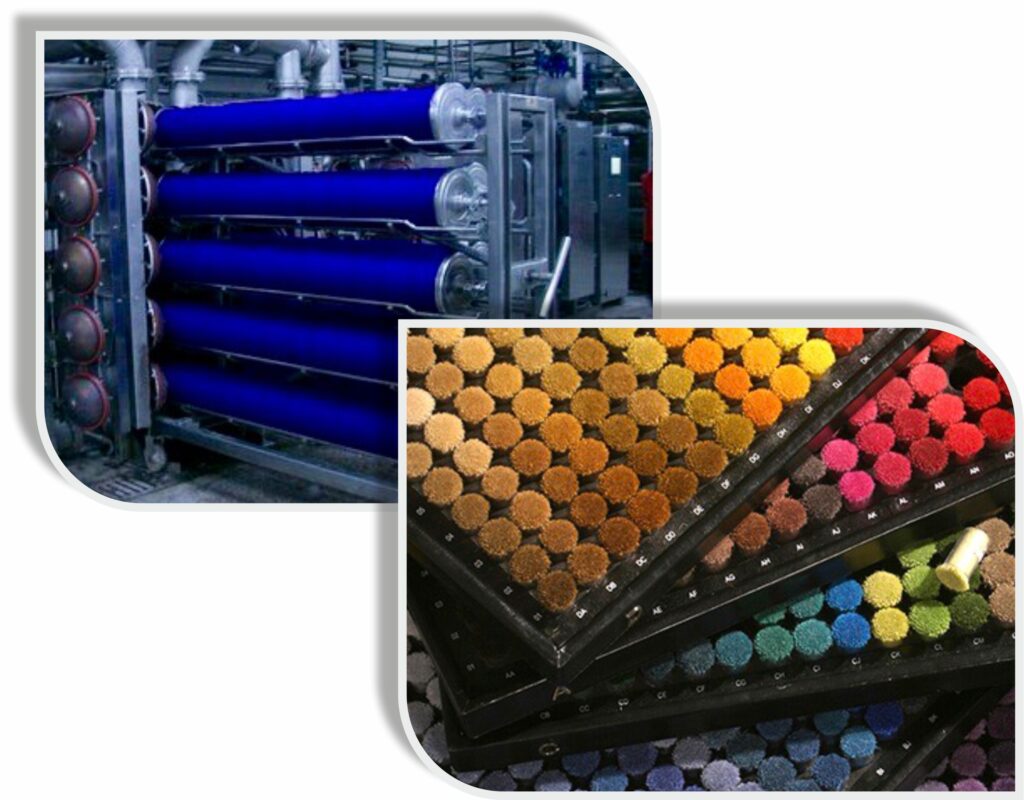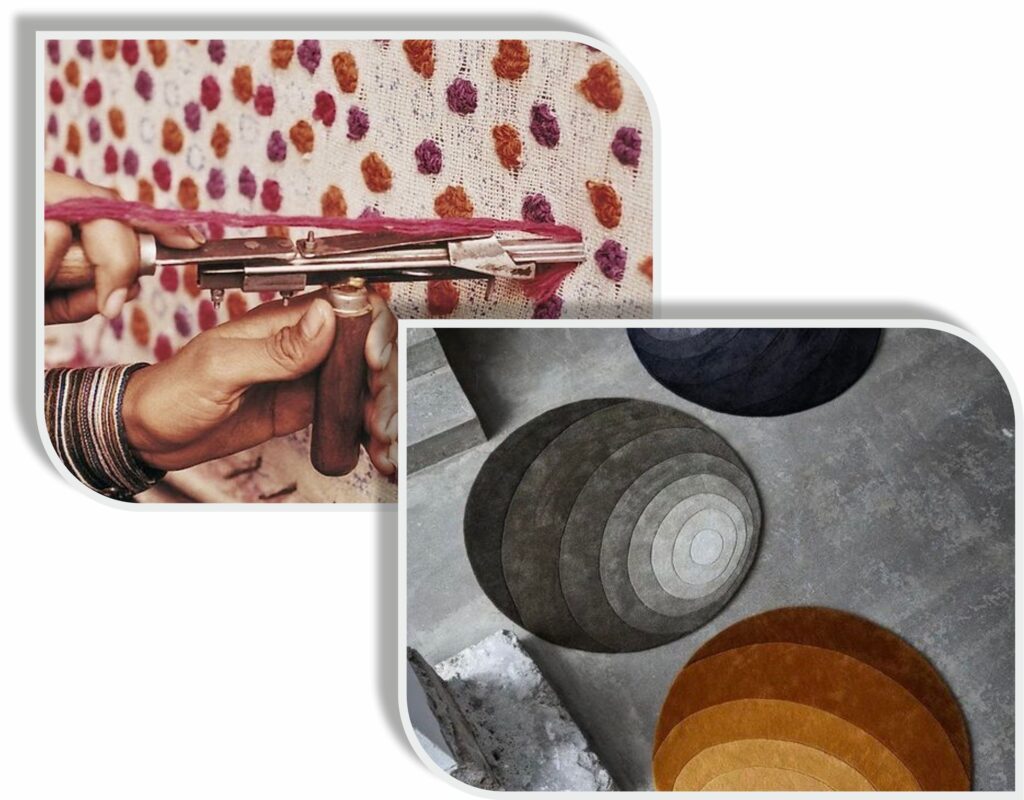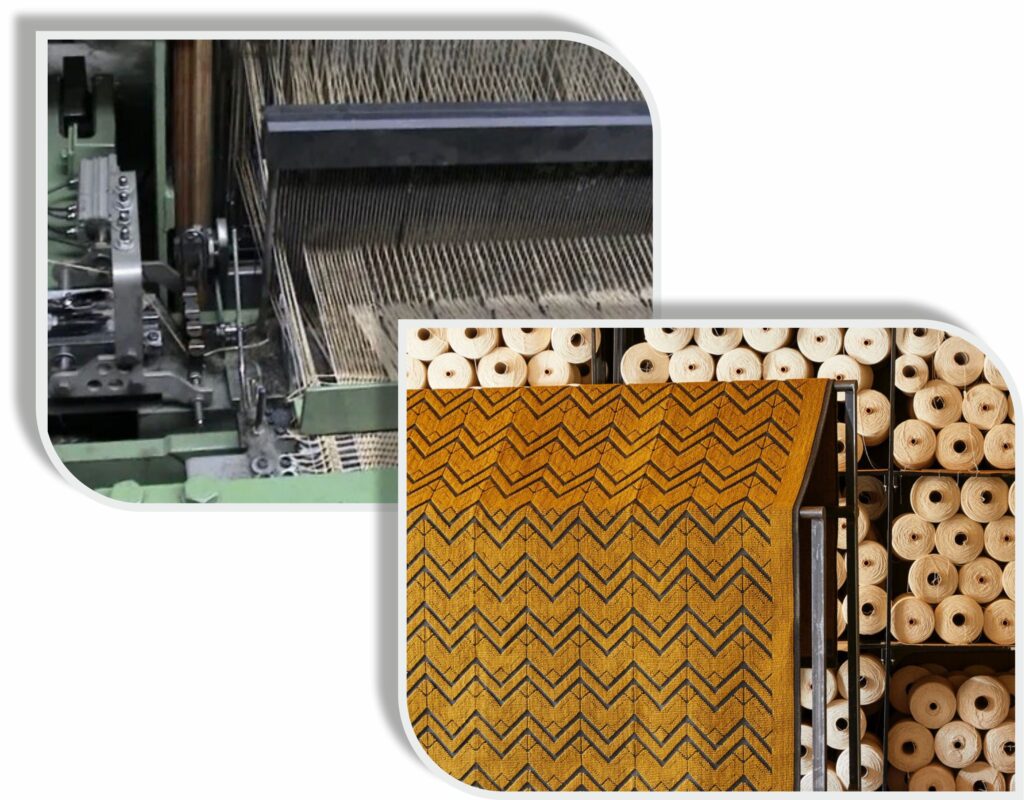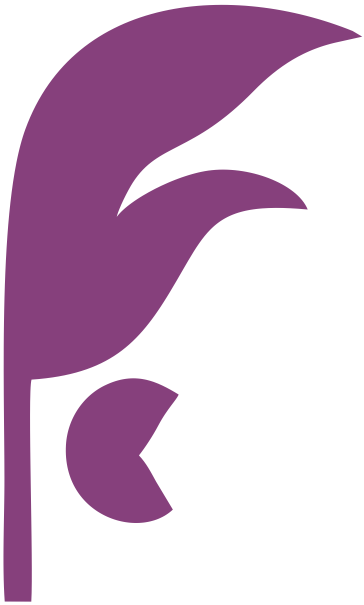
Dyeing
Dyeing is the process of adding color to textiles or other materials. It involves immersing the material in a solution of dye and water, which allows the dye to penetrate and bond with the fibers. The material is then rinsed and dried to set the color. The purpose of dyeing is to add color and enhance the appearance of textiles, as well as to provide resistance to fading and wear. Different types of dyes are used for different materials, with natural fibers typically requiring different dyes than synthetic fibers. Dyeing can be done in a variety of ways, including using natural or synthetic dyes, and can be done by hand or with modern machinery.
Hand Tufting
Hand-tufting is a rug-making technique that involves punching strands of wool or other fibers through a base fabric using a hand-held tufting gun. The gun is used to create loops of yarn on the fabric, which are then trimmed to create a pile. The process can be done quickly and is less labor-intensive than hand-knotting. The resulting rugs are less expensive than hand-knotted rugs, but also less durable. Hand-tufting allows for the creation of intricate designs and can be used to make custom-sized rugs. It is a popular choice for those who want high-quality rugs at a more affordable price.


Handloom
Handloom is a traditional weaving technique that uses a manually operated loom to produce fabrics. The process involves interlacing threads on a loom to create a woven fabric. The weaver manually controls the loom and guides the threads through the process of interlacing to create the desired pattern. Handloom fabrics are known for their unique texture and quality, as well as the variety of designs that can be created. Handloom is a versatile technique that can be used to produce a range of textiles, from simple cotton fabrics to intricate silk brocades. Handloom fabrics are valued for their durability and natural properties, as well as their traditional and cultural significance.
Broadloom
Broadloom is a term used to describe a type of carpet that is woven on a wide loom. The process involves weaving a large sheet of carpet that can be cut to size and installed wall-to-wall in a room. Broadloom carpet can be made from a variety of materials, including wool, nylon, polyester, and olefin. It is available in a range of colors, patterns, and textures. The function of broadloom is to provide a wall-to-wall carpeting solution for large spaces such as hotel lobbies, ballrooms, and commercial offices. Broadloom carpet is also commonly used in residential homes as a practical and stylish flooring option.


FlatWeave
Flatweave is a type of rug or carpet that is woven on a loom. The process involves weaving the weft yarn over and under the warp yarn to create a flat, even surface. Unlike pile rugs, flatweave rugs do not have a raised surface, which makes them more lightweight and easier to clean. Flatweave rugs can be made from a variety of materials, including wool, cotton, and synthetic fibers. They are available in a range of colors and patterns and can be used in both traditional and modern decor styles. The function of flatweave is to provide a durable and low-maintenance flooring solution that is suitable for high-traffic areas, such as entryways and living rooms.
Jacquard
Jacquard is a weaving technique that allows for the creation of intricate patterns and designs in fabric. The process involves using a loom that is controlled by a computer program to create complex weaves that would be difficult to achieve by hand. Jacquard looms can use a range of materials, including silk, cotton, and synthetic fibers, and are capable of producing a wide range of patterns and textures. The function of jacquard is to create high-quality fabrics that are used in a variety of applications, including clothing, upholstery, and home decor. Jacquard fabrics are known for their durability, richness of color, and intricate designs.


